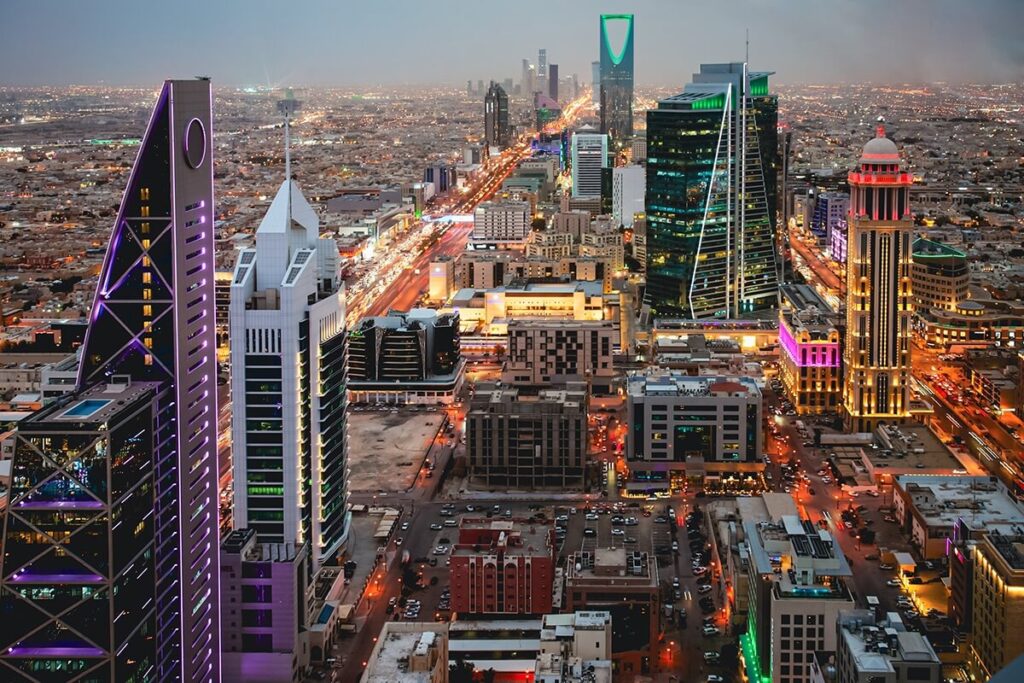In the past 12 months, the average rental rates for regional and super regional malls in Riyadh have increased by 3% to SR2,725 ($727) per square meter, while the retail market’s occupancy rates have increased by 5 percentage points to 90%.
As per the Summer 2024 Saudi Arabia Retail Market Overview report by global property consultancy Knight Frank, Riyadh currently has 3.6 million square meters of retail space available, and approximately 27,050 square meters of new retail space will enter the market in Q1 2024. By 2026, Knight Frank predicts that the retail stock in the capital will have grown by 28% to 4.6 million sq.m.
According to Knight Frank, in contrast to the capital, Jeddah and the Dammam Metropolitan Area (DMA) have seen muted growth in the retail market over the past 12 months, with occupancy rates in both cities falling by 1% to 84% and 89%, respectively. The average rent in Jeddah has decreased by 7% to SR2,465 per month, while the average rental rate in DMA regional and super regional malls has decreased by 1.3% to SR2,275 per month.
Rapidity of evolution
Faisal Durrani, Partner – Head of Research, Mena, explained: “The rapidity of the evolution of the retail and food and beverage landscape in Saudi Arabia cannot be overstated and Riyadh sits at the heart of this phenomenal growth, which is also powering the kingdom’s economic diversification efforts. We are in the midst of a significant liberalization of Saudi Arabia’s entertainment sector as well, resulting in the development of new cinemas, concert halls, theme parks, and sports complexes, facilities. This transformation is reshaping the retail landscape while also making a substantial contribution to non-oil GDP growth.
“Looking ahead, a further 100,000 sq m of space is likely to be completed in the capital this year, which while welcome news for consumers, shines a light on the importance for mall operators, developers and retailers to double-down on experiential retail offerings to stay relevant and appealing.”
Data-driven future success
Knight Frank emphasizes data is important to new retail market entrants’ long-term success.
Jonathan Pagett, Partner – Retail Advisory, KSA, commented: “What we are witnessing today in Saudi’s retail scene is a newly defined retail destinations and recent consumer demands evolving around ‘feels’ where purchases have become a by-product of shopping mall visitation with consumers continue to seek unique immersive experiences. With a particular focus on food and beverage and lifestyle retail developments, Saudi Arabia is undergoing an exciting transformation as it pivots towards steady adaptation to evolving consumer preferences and market dynamics.
“Therefore, we believe developers should aim to avoid the ‘build it and they will come’ mentality and instead focus on ‘top down’ approach to define market share and a ‘bottom up’ strategy to fully understand consumer data and what is the optimal positioning to optimize footfall, conversion, net operating income, and capital value.”
According to Knight Frank, conducting a comprehensive examination of consumer trends, customer journeys, and changing spending patterns is necessary to make well-informed decisions regarding major capital investment plans.
Economic diversification
Knight Frank also mentions Saudi Arabia’s e-commerce market, which grew by 28% in 2023 to reach SR157 billion ($41.8 billion). Government support for digital retail infrastructure, along with rising internet penetration and smartphone usage, are driving this growth.
Amar Hussain – Associate Partner, Research, ME, concluded: “The rapid adoption of digital payment methods and e-commerce platforms is reshaping the retail sector in Saudi Arabia. Retailers are increasingly investing in omnichannel strategies to integrate their online and offline operations, ensuring a seamless consumer experience. This digital transformation is essential for meeting the evolving preferences of consumers.”
